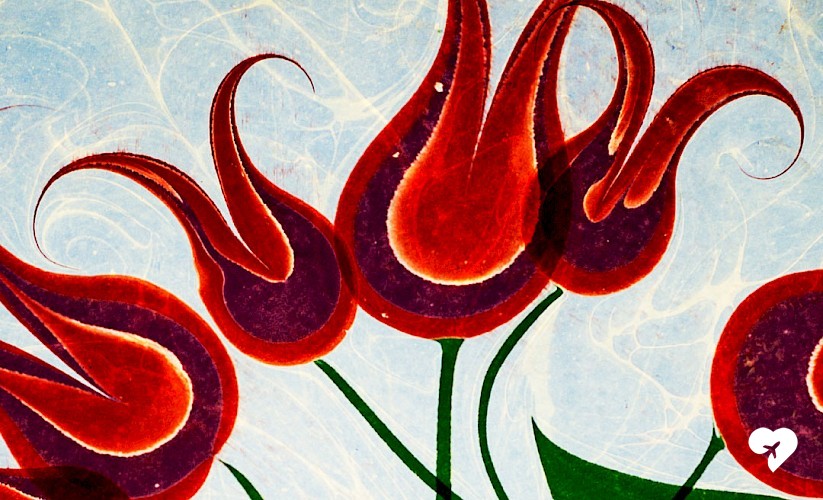1. Arts of the Meddah, public storytellers (2008)
The Art of the Meddah (Public Storytelling) may be described as the art of telling stories for the purpose of entertaining an audience with impersonations and animation. Those who practice this art are called meddah from metheden, the Arabic word for "one who praises". (READ MORE)
2. Mevlevi Sema ceremony (2008)
The Mevlevi Sema Ceremony is a Sufi ceremony that symbolizes stages on the path to accessing God and contains religious elements and themes with detailed rules and characteristics. (READ MORE)
3. Karagöz (2009)
Karagöz is a shadow play performed by an artist and is based on the funny dialogues and squabbles between Karagöz and Hacivat. The comical effect is achieved by the plays on words, dances and movements. (READ MORE)
4. Âşıklık (minstrelsy) tradition (2009)
The Minstrelsy tradition is not only the cultural memory of Anatolia, but it is also an important expression of its cultural diversity and richness. It is a multi-faceted art that includes poetic, musical and narrative expressions filtered and shaped through centuries of experience. The most important characteristic of the minstrelsy tradition with its unique performance and convention is its appeal to broad segments of society because it reflects the lifestyles, worldviews, ethics and aesthetic values of the age. (READ MORE)
5. Kırkpınar oil wrestling festival (2010)
The Kırkpınar Oil Wrestling annual tournament (the oldest wrestling tournament of the world) started when Edirne was conquered by the Ottomans in 1361. The tradition continued with the participation of hundreds of wrestlers every year and will have been held 654 times in 2015. (READ MORE)
6. Traditional Sohbet meetings (2010)
Traditional sohbet meetings have different names in different areas, including: sıra gezmeleri, sıra name, barana sohbetleri, yaran, sırayarenler, kürsübaşı sohbetleri, velime geceleri, cümbüş, delikanlıteşkilatı, gençler kurulu, gezek, keyf/kef, muhabbet, oda teşkilatı,oturmah, sohbet, and erfane. (READ MORE)
7. Semah, Alevi-Bektaşi ritual (2010)
The semah performed during the service (cem) as required by Alevi and Bektaşi belief is a means of reaching God through mystical and aesthetic movements executed in harmony with the rhythm of music and song accompanied by a saz (Turkish stringed instrument) played by the zakir who conducts the service. (READ MORE)
8. Ceremonial Keşkek tradition (2011)
The ceremonial meal where groups of men and women all work together cooking wheat and meat in large cauldrons over an open fire is called "keşkek", and the rituals that accompany the meal are called the Ceremonial Keşkek Tradition. The keşkek tradition is a social practice of solidarity performed on the basis of joint labor and sharing in ceremonies where community participation is high. Symbolic aspects of the tradition include beating the wheat and meat for a long time before the keşkek is cooked, and stirring the food with a shared rhythm while it is boiling. (READ MORE)
9. Mesir Macunu festival (2012)
The Mesir Macunu Festival celebrated during the week of Nevruz (March 21-24), which is recognized as the beginning of spring, includes various cultural and traditional practices. It has been organized in Manisa for approximately 400 years. (READ MORE)
10. Turkish coffee culture and tradition (2013)
European countries developed their coffee brewing methods after deriving coffee drinking habit from the Turks; however, the method of brewing Turkish coffee has remained almost unchanged. (READ MORE)
11. Ebru, Turkish art of marbling (2014)
Ebru is the traditional art of creating colorful patterns by sprinkling and brushing color pigments on a pan of oily water and then transforming this pattern to a special paper. It has been a traditional art of book enriching calligraphy and binding books for many centuries. In the 13th century, the first forms of Ebru emerged in Central Asia and spread to Anatolia through. During the Ottoman period, Turkish calligraphers and artists created new forms and perfected techniques. (READ MORE)
12. Flatbread making and sharing culture: Lavash, Katyrma, Jupka, Yufka (2016)
Lavash, Katyrma, Jupka and Yufka being varieties of round- or oval-shaped thin breads that take shape by rolling dough by hand or using a dough roller, called "oklava" symbolizes not only a consumption element but also a common making and sharing culture inherited from the past in the involving regions of Azerbaijan, Iran, Kazakhstan, Kyrgyzstan and Turkey. (READ MORE)
13. Nawrouz, Novruz, Nowrouz, Nowrouz, Nawrouz, Nauryz, Nooruz, Nowruz, Navruz, Nevruz, Nowruz, Navruz (2016)
Nevruz is widely celebrated in the northern hemisphere, particularly in societies that speak Turkish and Persian. Nevruz comes from the Persian words nev and ruz. It actually means "new day" and is a celebration of spring that is regarded as the first day of the year in many societies. According to the Gregorian calendar, Nevruz begins on March 21st. (READ MORE)
14. Traditional craftsmanship of Çini-making (2016)
Glazed tile and ceramic household stuffs or wallboards of several colours and motifs made by firing the pulped clay soil are called "çini". Çini-making means the craftsmanship shaped around traditional Turkish art of çini since 12th century with its own specific production and adornment techniques like "minai", "luster", "polishing", "underglaze". (READ MORE)
